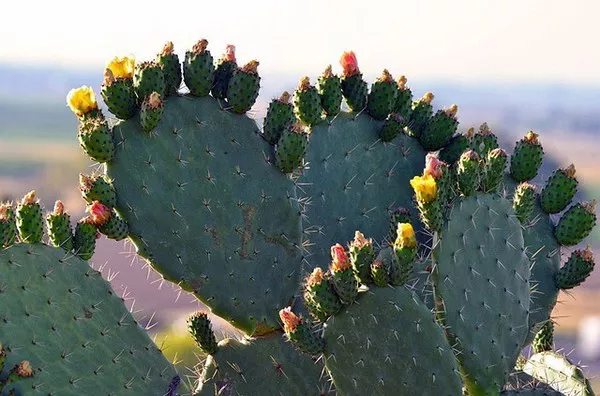Cacti are renowned for their ability to thrive in arid environments, often surprising us with their vibrant and mesmerizing blooms. These fleeting moments of beauty, however, beg the question: what should be done once the bloom fades? Understanding how to care for your cactus after it blooms not only preserves the plant’s health but also sets the stage for future blossoms. In this comprehensive guide, we delve into the intricacies of post-bloom cactus care, ensuring that your desert darling continues to dazzle for years to come.
Understanding the Blooming Cycle
Before delving into post-bloom care, it’s crucial to comprehend the cactus blooming cycle. Unlike many plants that bloom annually, cacti have varying blooming patterns depending on species, environmental factors, and individual health. Generally, cacti bloom for a relatively short period, typically lasting from a few days to a few weeks. Once the bloom cycle concludes, the flowers gradually wither and fall off, leaving behind the potential for new growth.
1. Enjoy the Bloom
The first step in caring for your cactus post-bloom is simple: enjoy the spectacle. Bask in the beauty of the vibrant flowers while they last, taking the time to admire the intricate details and colors. Since the bloom period is relatively short-lived, savoring this fleeting moment is essential. Capture photographs to immortalize the memory, allowing you to reminisce about the bloom’s splendor long after it fades.
2. Pruning Faded Flowers
As the flowers begin to wilt and lose their vibrancy, it’s time to initiate post-bloom care. Start by carefully pruning the faded flowers from the cactus. Use sterilized pruning shears to prevent the spread of diseases and ensure clean cuts. Trim the flowers close to the base where they connect to the stem, taking care not to damage the surrounding tissue. Removing spent blooms not only enhances the plant’s appearance but also redirects its energy towards future growth.
3. Assessing the Health of the Plant
While pruning, take the opportunity to assess the overall health of your cactus. Inspect the stems and foliage for any signs of disease or pest infestation. Common issues include rotting stems, yellowing or shriveled foliage, and the presence of pests such as scale or mealybugs. Address any problems promptly to prevent further damage and promote the plant’s recovery.
4. Adjusting Care Routine
After the bloom cycle, your cactus may require adjustments to its care routine. During the blooming period, many enthusiasts opt to provide slightly more water and fertilizer to support flower production. However, post-bloom care typically involves dialing back on these inputs to prevent overstimulation and encourage the plant to enter a resting phase. Resume the regular watering schedule and fertilization routine appropriate for your cactus species, ensuring that it receives adequate but not excessive nutrients.
5. Providing Adequate Light
Proper lighting is paramount for the health and vitality of your cactus, especially after blooming. While many cacti thrive in bright, indirect sunlight, some species may benefit from temporary shade as they recover from the energy expenditure of blooming. Monitor the plant’s response to its current lighting conditions and adjust as necessary to prevent sunburn or etiolation.
6. Temperature Considerations
Cacti are renowned for their resilience to extreme temperatures, but sudden fluctuations can stress the plant, especially after blooming. Ensure that your cactus is situated in an environment with stable temperatures, avoiding drafts or extreme heat/cold exposure. Protect the plant from frost during colder months, especially if it resides outdoors or in a drafty location.
7. Repotting and Root Health
Depending on the size and growth rate of your cactus, post-bloom may present an opportunity to repot the plant. Assess the root system to determine if the current pot has become too small or if the soil has become compacted. Repotting allows for fresh soil and increased room for root expansion, promoting overall plant health and vitality. Use a well-draining soil mix designed for cacti and succulents to prevent waterlogged conditions, which can lead to root rot.
8. Pruning and Shaping
Beyond removing faded flowers, consider pruning and shaping your cactus to encourage a desirable growth habit. Trim any dead or damaged stems, as well as any excessive growth that detracts from the plant’s appearance. Shaping can help maintain the cactus’s aesthetic appeal and prevent overcrowding, allowing for better air circulation and light penetration.
9. Dormancy Period
Following the bloom cycle, some cacti enter a period of dormancy characterized by reduced growth and metabolic activity. This dormant phase is a natural response to environmental cues such as temperature and daylight duration. During dormancy, it’s essential to adjust your care routine accordingly, providing minimal water and fertilizer to prevent overwatering and nutrient buildup. Monitor the plant closely for signs of new growth, signaling the end of dormancy and the resumption of regular care.
10. Patience and Observation
Above all, caring for your cactus after it blooms requires patience and keen observation. Each plant is unique, responding differently to environmental conditions and care practices. Take the time to observe your cactus’s behavior, noting any changes in growth, appearance, or overall health. With patience and attentive care, your cactus will reward you with future blooms and continued beauty.
Conclusion
Caring for your cactus after it blooms is a rewarding endeavor that ensures the plant’s health and longevity. By following these guidelines and incorporating them into your post-bloom care routine, you can maximize the beauty of your cactus and set the stage for future blossoms. Remember to enjoy the fleeting moments of bloom, and embrace the opportunity to nurture your desert darling to its fullest potential. With proper care and attention, your cactus will continue to dazzle with its vibrant flowers for years to come.


